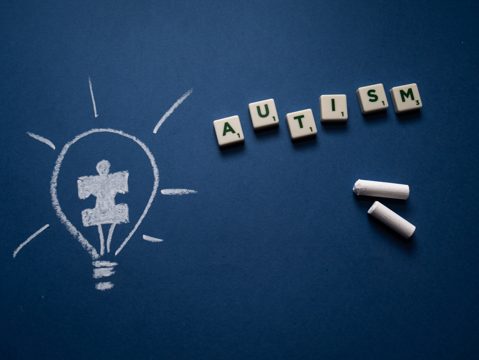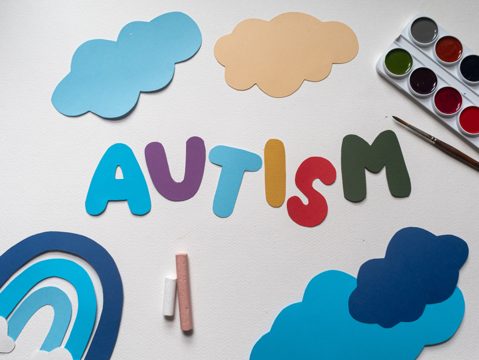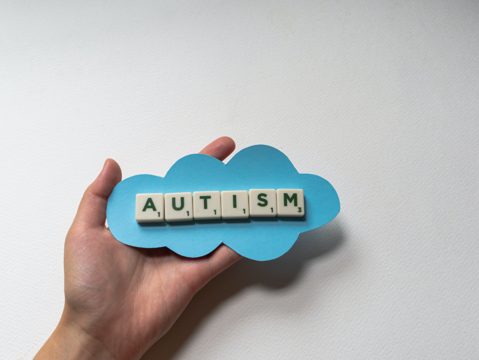What is Autism Spectrum Disorder?
Autism Spectrum Disorder (ASD) is a neurological and developmental disorder characterized by difficulty with communication and social interaction. It is a spectrum disorder, meaning that it affects individuals differently and in varying degrees.
ASD can range from mild to severe and can affect a person’s ability to function in daily life. Individuals with ASD often have difficulty understanding social cues and communicating, and may have difficulty relating to others. They may be overly sensitive to sensory input or have difficulty transitioning from one activity to another. Additionally, they may display repetitive behaviors or become fixated on specific topics or objects.

They may also have difficulty with language, both understanding and speaking. As a result, individuals with ASD may require a variety of treatments and therapies, such as occupational therapy, speech therapy, social skills training, and behavior modification.
These therapies can help individuals with ASD learn to interact with others, understand language, and cope with sensory processing issues. Many individuals with ASD are able to lead meaningful and productive lives with the help of appropriate intervention and support.
Signs and Symptoms
Signs of autism may include difficulty with social communication and interaction, repetitive behaviors, and restricted interests. Individuals with ASD may also display difficulty with nonverbal communication such as gestures, facial expressions, and tone of voice.
The symptoms of ASD can range from mild to severe, and may vary from person to person. Individuals with Autism Spectrum Disorder (ASD) may find difficulty in communication and interaction with others, such as difficulty understanding and using nonverbal communication like facial expressions, gestures, and tone of voice. Furthermore, individuals with ASD may experience repetitive behaviors and interests that are overly focused and restricted. These symptoms can range from mild to severe, and can even vary from person to person.

Early diagnosis and intervention is key in helping individuals with ASD learn how to manage their symptoms and lead a more satisfying life. Depending on the severity of the symptoms, individuals with ASD may require specialized therapies, educational programs, and support services.
It is important to remember that everyone with autism is different, and no two people with ASD will have the same experience or need the same type of treatment. With the right support and resources, individuals with autism can learn to recognize and manage their symptoms and live a more fulfilling life.
Diagnosis
ASD is typically diagnosed by a developmental pediatrician, child neurologist, child psychologist or psychiatrist. A comprehensive evaluation that includes an assessment of the individual’s developmental history, cognitive skills, language abilities, motor skills, and behavior is necessary for diagnosis.
Additional elements of the assessment may include a structured interview with the individual and their family, a review of school and medical records, and the administration of standardized tests. It is important to note that there is no single test or set of tests to diagnose ASD.

Rather, the diagnosis is based on a pattern of behaviors that is assessed over time. A key component of the evaluation process is considering other possible explanations for the individual’s behavior and determining that the behaviors are not better explained by another mental health disorder or medical condition.
A multidisciplinary team of professionals, including the individual and their family, can then work together to develop a comprehensive treatment plan tailored to the individual’s needs.
Treatment
Treatment for ASD can include behavioral therapy, speech and language therapy, occupational therapy, and social skills training. Medication may also be prescribed to help manage symptoms such as anxiety, depression, or aggression.
It is important to note that no two people with ASD are exactly alike, and treatment should be tailored to the individual’s needs. For this reason, it is important to consult with a mental health professional who is experienced in working with individuals on the autism spectrum. A comprehensive assessment, involving the person with ASD, parents, teachers, and others close to the individual, can help determine what types of interventions may be most effective.

Interventions should focus on the individual’s unique strengths and challenges, helping to teach skills and manage behaviours. Additionally, family involvement in the treatment plan is critical, as it can provide an understanding of the individual’s needs and help create a supportive environment.
Finally, it is important to recognize that treatment for ASD is a long-term process, and it is necessary to monitor progress, adjust the treatment plan as needed, and provide support over an extended period of time. With dedication, patience, and the right approach, individuals with ASD can make significant progress and lead fulfilling lives.
How Often ASD Occurs
ASD affects an estimated 1 in 59 children in the United States. It occurs more commonly in boys than girls, and is more likely to be diagnosed in children with certain risk factors, such as a family history of autism or developmental delays.
ASD is a lifelong neurological disorder that is usually diagnosed between the ages of 2 and 3. It is characterised by challenges with communication, social interaction, and restricted or repetitive behaviours. It can also cause difficulties with sensory processing, such as difficulty with loud noises or feeling overwhelmed in busy environments. People with ASD may have difficulty with understanding social cues, making eye contact, or reading facial expressions.

They may also have difficulty with initiating or sustaining conversations, or struggle to understand the perspectives of others. Additionally, some people with ASD may find it difficult to engage in imaginative play, such as playing with dolls or pretend play.
It is important to remember that everyone with ASD is unique and may have different strengths and challenges. For example, some individuals may have excellent verbal skills and be able to hold lengthy conversations, while others may have non-verbal communication skills and be able to understand complex language. As with any condition, it is important to understand the individual and provide them with the support and care that they need.
If You’re Concerned
If you are concerned that your child may be showing signs of ASD, it is important to talk to your pediatrician. If your pediatrician agrees that your child may be displaying signs of ASD, they may refer you to a specialist such as a developmental pediatrician, child neurologist, child psychologist or psychiatrist for a comprehensive evaluation.
It is important to note that the diagnosis of ASD is a complex process and requires the expertise of a specialist in the field. The evaluation typically includes a comprehensive developmental assessment and may include interviews with the parents or caregivers, language assessments, behavioral assessments, cognitive testing, social-emotional assessments, and/or additional assessments as needed. After the evaluation, the specialist will discuss the findings with you and provide recommendations for any interventions or next steps that may be needed.

It is important to remember that each child is unique and the diagnosis process may be different for each individual. It is also important to be patient and understand that treatment and intervention options may take time to develop and implement.
With the right support and resources, children with ASD can go on to live fulfilling and successful lives.
Asperger Syndrome
Asperger Syndrome (AS) is a form of ASD that was once considered a separate disorder. It is characterized by significant difficulties with social interaction and communication, and may also involve restricted or repetitive behaviors.
Those with Asperger Syndrome may display fewer signs of language delay than those with other forms of ASD. People with Asperger Syndrome may experience difficulty in making friends, forming relationships and socialising in general. They may have difficulty picking up on social cues, interpreting body language and understanding sarcasm. They may be overly sensitive to certain sounds, lights or textures, and may be prone to repetitive behavior or intense interests in a particular topic. Asperger Syndrome can also cause problems with motor skills, particularly with coordination and balance.

Those with Asperger Syndrome may also be more prone to anxiety, depression and obsessive-compulsive disorder. Asperger Syndrome is not a curable disorder, but there are many treatments and interventions available to help those with the condition.
Therapy, such as social skills training and behavioral therapy, can help those with Asperger Syndrome develop better communication and socialization skills. Occupational therapy can also help those with Asperger Syndrome learn how to better manage their emotions and environment. Additionally, medications may be prescribed to help those with Asperger Syndrome manage anxiety or depression. With proper treatment, those with Asperger Syndrome can lead full and happy lives.
Risk Factors
Risk factors for ASD may include advanced parental age, genetic predisposition, poor prenatal care, and prenatal exposure to certain environmental toxins. It is important to note that the cause of ASD is not fully understood, and there is no single known cause for the disorder.
Genetic research has identified multiple gene mutations and abnormal gene patterns that may be linked to ASD. Additionally, environmental factors such as prenatal exposure to certain toxins or medications, nutrition deficiencies, and maternal infection during pregnancy may be linked to ASD.

It is also possible that certain combinations of genetic and environmental factors could play a role in the development of ASD. Further research is needed to gain a better understanding of the complex factors that contribute to ASD.
Signs of Autism
Signs of autism can vary greatly, and may include difficulty with social interaction and communication, repetitive behaviors, restricted interests, and sensory sensitivities. It is important to note that these signs can range from mild to severe, and may vary from person to person.
For instance, some people with autism may have difficulty forming and maintaining relationships, or have trouble understanding social cues or interpreting facial expressions. Others may be unable to communicate verbally, or may rely on a communication device or a sign language to communicate with others. Additionally, some may engage in repetitive behaviors such as rocking, flapping, or spinning, or may have restricted interests in a specific subject or activity. They may also be overly sensitive or under-sensitive to certain sensory inputs, such as sound, light, or touch.

Furthermore, some may have difficulty with transitions or changes in routine, and may exhibit anxiety or outbursts in response to changes in their environment. It is important to keep in mind that the signs and symptoms of autism can vary greatly from person to person.
Therefore, it is crucial to have an individualized approach to treatment that takes into account the unique challenges and strengths of the individual. With the right support, individuals with autism can achieve great things, and with proper care and understanding, can lead happy, fulfilling lives.
Autism Spectrum
The autism spectrum is a term used to describe the range of severity of autism, from mild to severe. This includes both high-functioning autism (or Asperger Syndrome) and more severe forms of autism.
The autism spectrum is a term used to describe the range of severity of autism, from mild to severe. This includes both high-functioning autism (or Asperger Syndrome) and more severe forms of autism. Those with high-functioning autism can often appear to have normal behavior, but may lack the ability to interpret social cues, have difficulty forming relationships, and struggle with communication. Those with more severe forms of autism may have difficulty speaking, understanding language, and engaging with others.

They may also display repetitive behaviors, such as hand flapping and rocking. No matter the severity of autism, individuals on the spectrum all share the common struggle of processing and understanding information differently than others.
With the right support, those on the autism spectrum can gain valuable skills and coping mechanisms, allowing them to live a more independent life. With increased education and awareness, those on the spectrum can be embraced and accommodated for their unique characteristics, creating a stronger sense of acceptance and understanding in the world.
Aspergers Symptoms
Asperger Syndrome (AS) is a form of ASD that is characterized by significant difficulties with social interaction and communication, and may also involve restricted or repetitive behaviors. Those with Asperger Syndrome may display fewer signs of language delay than those with other forms of ASD.
Additionally, individuals with Asperger Syndrome may have difficulty in understanding body language, facial expressions, and gestures, and may not be able to use them in conversations. People with Asperger Syndrome may also have difficulty in understanding sarcasm or jokes and have a very literal understanding of language. Furthermore, they may also have difficulty in maintaining eye contact and in using appropriate facial expressions and body language during interactions.

They may also be overly sensitive to sensory stimuli such as bright lights, loud noises, and certain textures. Not only this, but people with Asperger Syndrome may also have difficulty with executive functioning, which includes planning, problem-solving, organizing, and regulating emotions.
Finally, those with Asperger Syndrome may display intense interests in a few topics, be very rigid in their behavior and routines, and have difficulty in transitioning from one activity to another.
High Functioning Autism
High functioning autism (HFA) is a term used to describe individuals with milder forms of autism who are able to function in daily life. Those with HFA may be able to communicate and interact socially, although they may still have difficulty with nonverbal communication such as facial expressions and gestures.
They may also have difficulty with transitions, sensory processing, executive functioning, and motor skills. Individuals with HFA may struggle with social anxiety, depression, and other emotional regulation issues as well. Furthermore, they may have difficulty forming relationships with others and may have difficulty with group dynamic activities. Additionally, they may be prone to fixating on certain topics or activities that they find interesting and may have difficulty with multitasking or starting new tasks.

While having HFA can be a challenge, there are many resources available for those struggling with the condition. People living with HFA can find support through therapy, counseling, and support groups.
Additionally, many employers are beginning to recognize the value of neurodiversity in the workplace and are willing to provide accommodations for those living with HFA. With the right support, those living with HFA can lead full, rewarding lives.
Autism Awareness Month
April is Autism Awareness Month, a time to increase understanding and acceptance of autism and those living with it. During this month, it is important to educate ourselves and others about autism, and to promote acceptance and inclusion of those with ASD in our communities.
April is Autism Awareness Month, an opportunity to foster understanding and acceptance of autism and those living with it. It is a time to build awareness and to help us better understand the needs of those with ASD. During this month, we should strive to educate ourselves and others about autism, and work towards creating a society where people with ASD are accepted and included.

This can be achieved by engaging in conversations and activities that seek to promote acceptance and understanding. We should also take the time to recognize and celebrate the unique strengths and talents of those with autism.
By taking part in activities that promote understanding and acceptance, we can make a difference in the lives of those with ASD and create a more inclusive society for all.
About us
Welcome to SeniorCaresHub! Welcome to our comprehensive senior care destination! We pride ourselves on being a trusted resource for all things related to caring for aging loved ones. We understand the unique needs and challenges that come with senior care, and our mission is to provide you with the information, resources, and support you need to confidently navigate this journey and help you provide the best possible care for your aging loved one.

